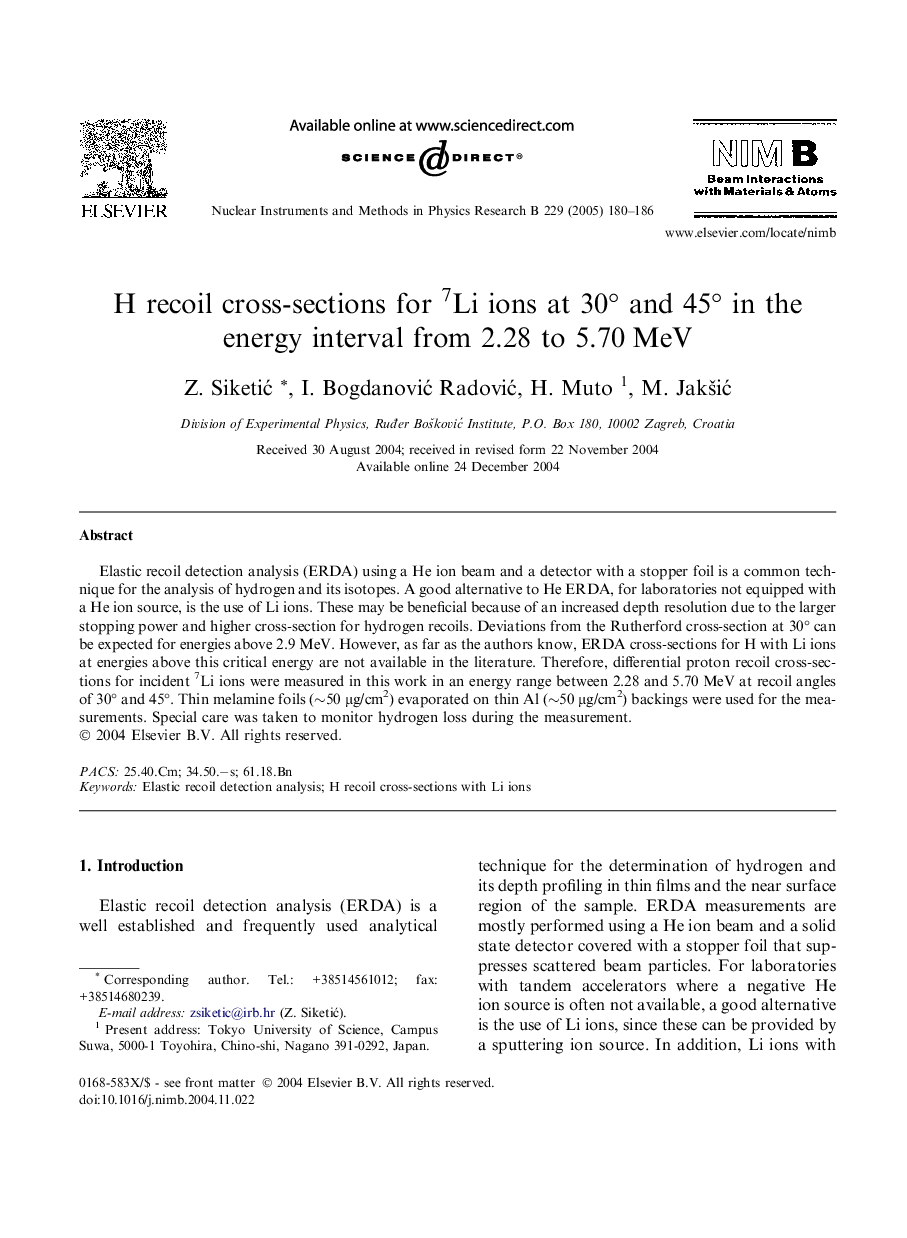| Article ID | Journal | Published Year | Pages | File Type |
|---|---|---|---|---|
| 10674922 | Nuclear Instruments and Methods in Physics Research Section B: Beam Interactions with Materials and Atoms | 2005 | 7 Pages |
Abstract
Elastic recoil detection analysis (ERDA) using a He ion beam and a detector with a stopper foil is a common technique for the analysis of hydrogen and its isotopes. A good alternative to He ERDA, for laboratories not equipped with a He ion source, is the use of Li ions. These may be beneficial because of an increased depth resolution due to the larger stopping power and higher cross-section for hydrogen recoils. Deviations from the Rutherford cross-section at 30° can be expected for energies above 2.9 MeV. However, as far as the authors know, ERDA cross-sections for H with Li ions at energies above this critical energy are not available in the literature. Therefore, differential proton recoil cross-sections for incident 7Li ions were measured in this work in an energy range between 2.28 and 5.70 MeV at recoil angles of 30° and 45°. Thin melamine foils (â¼50 μg/cm2) evaporated on thin Al (â¼50 μg/cm2) backings were used for the measurements. Special care was taken to monitor hydrogen loss during the measurement.
Related Topics
Physical Sciences and Engineering
Materials Science
Surfaces, Coatings and Films
Authors
Z. SiketiÄ, I. BogdanoviÄ RadoviÄ, H. Muto, M. JakÅ¡iÄ,
